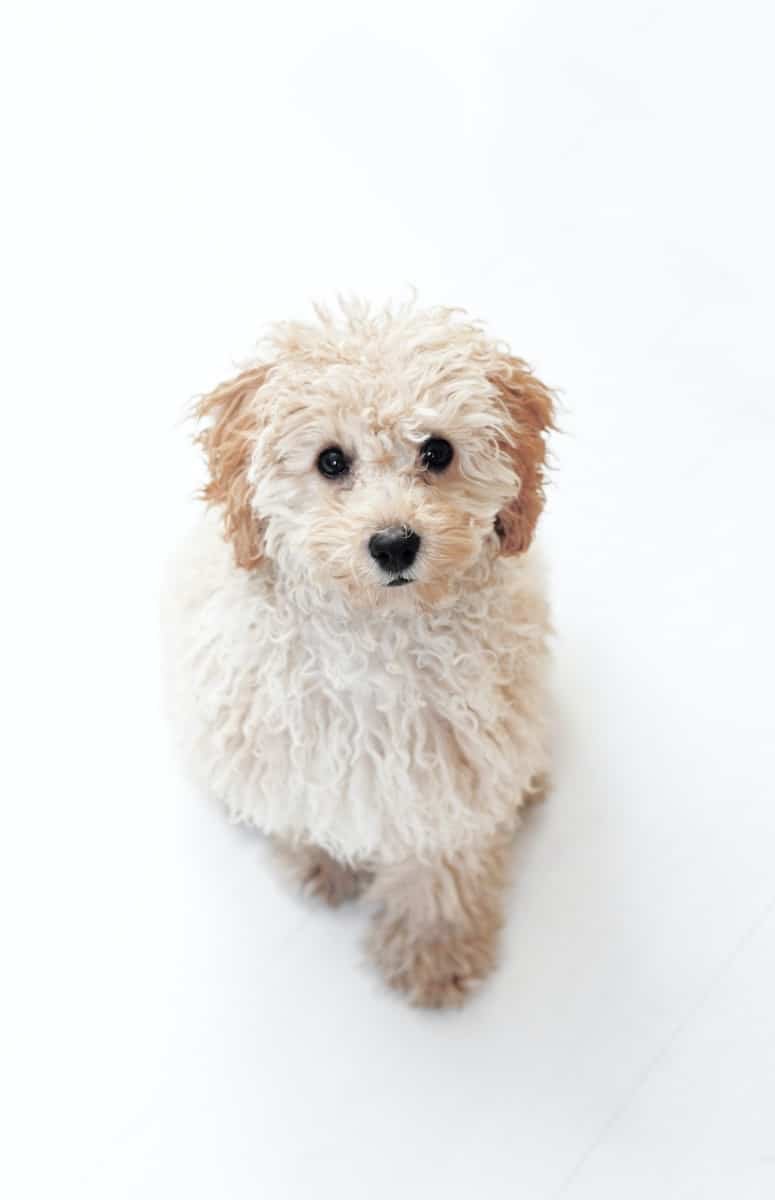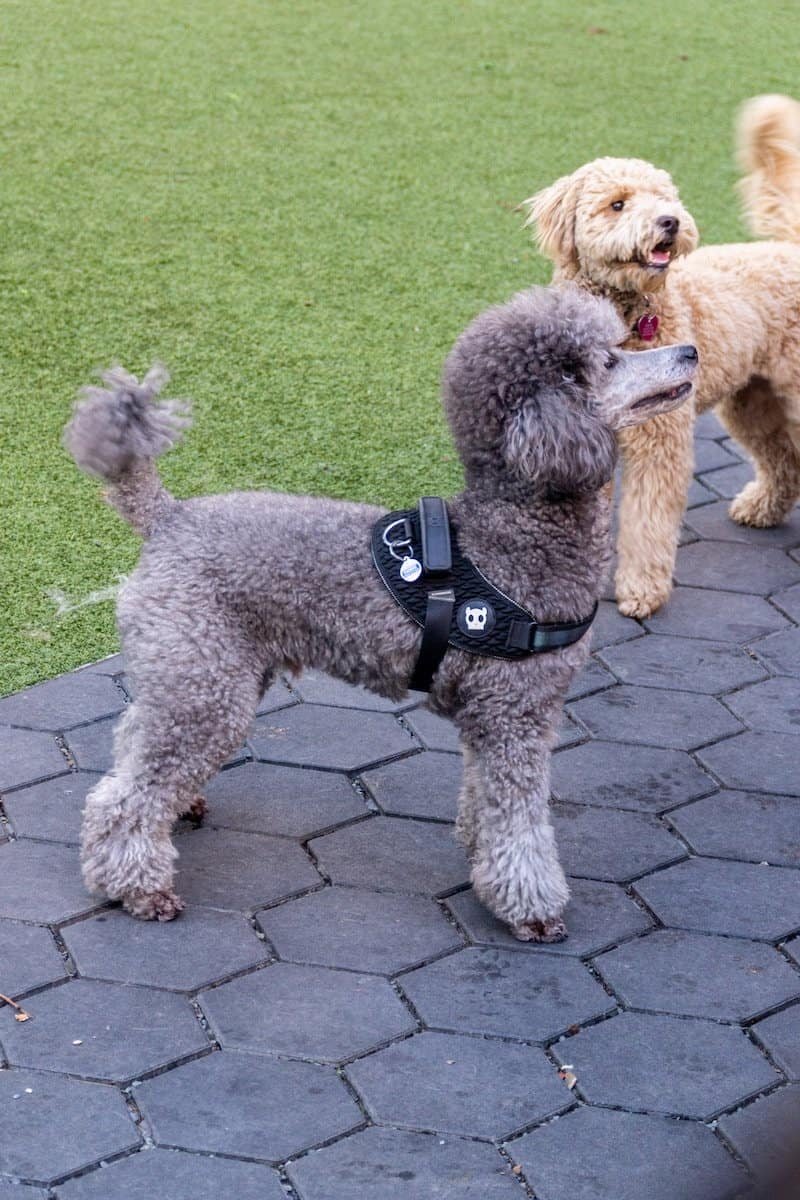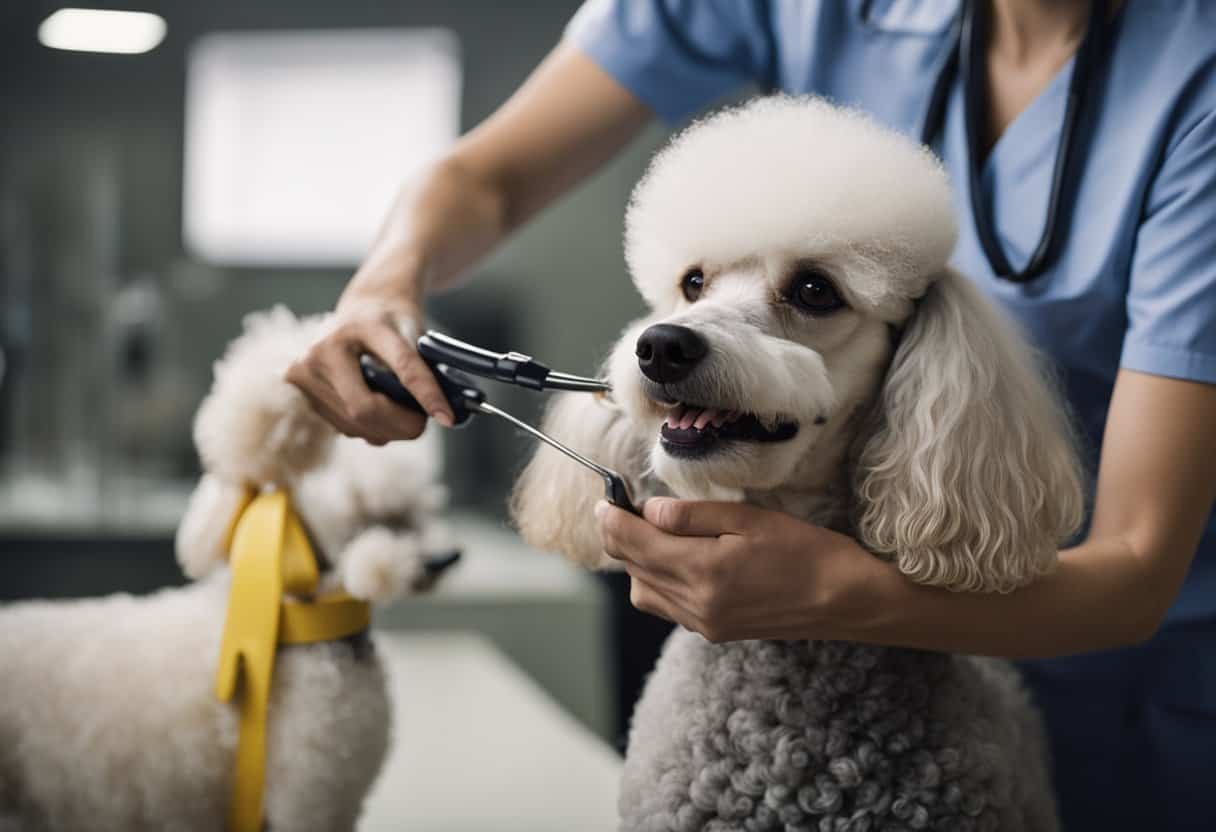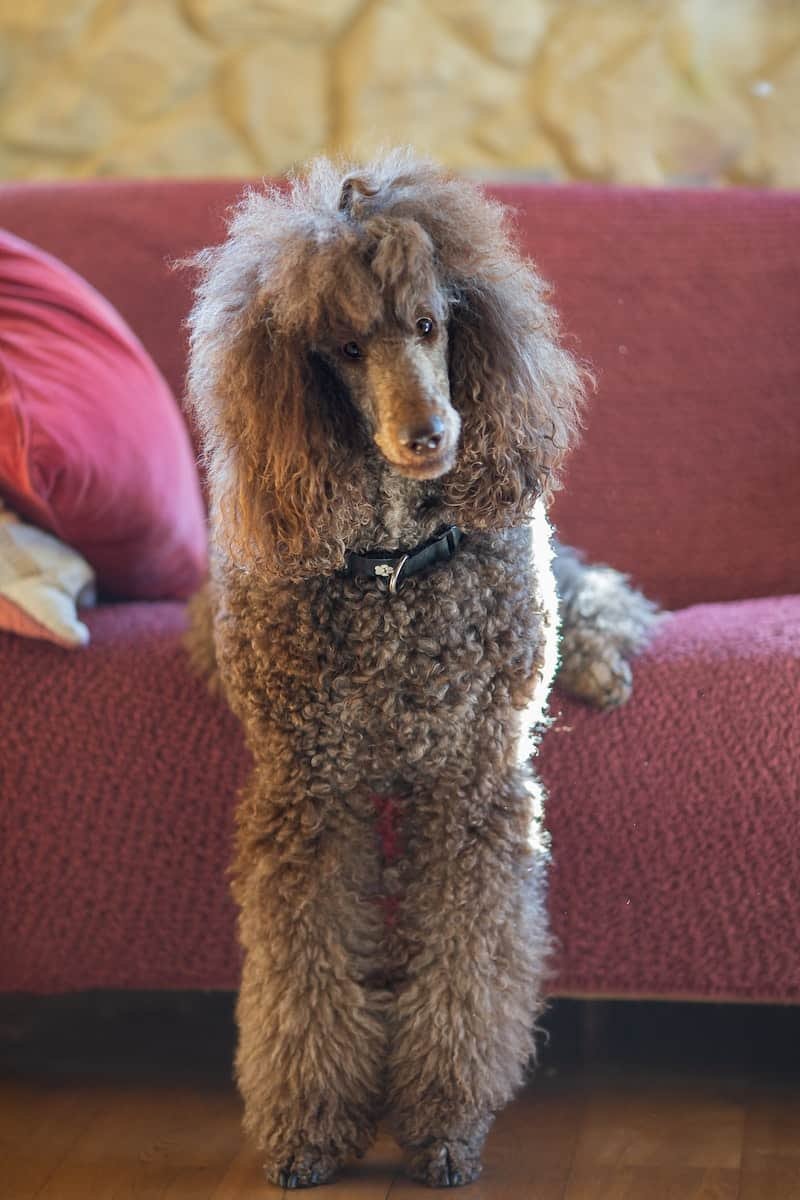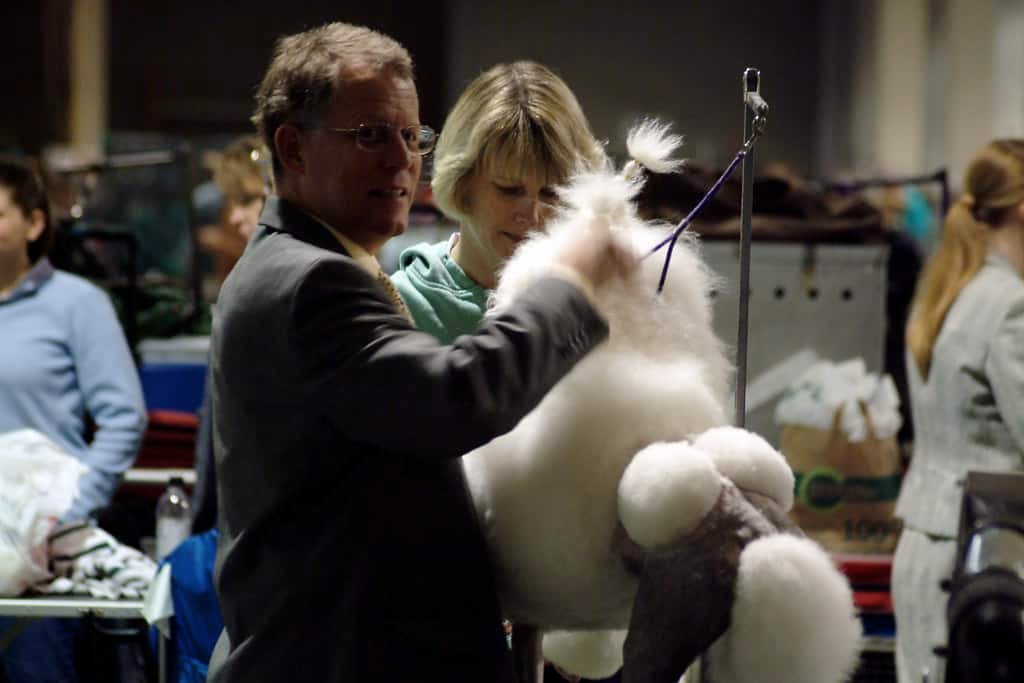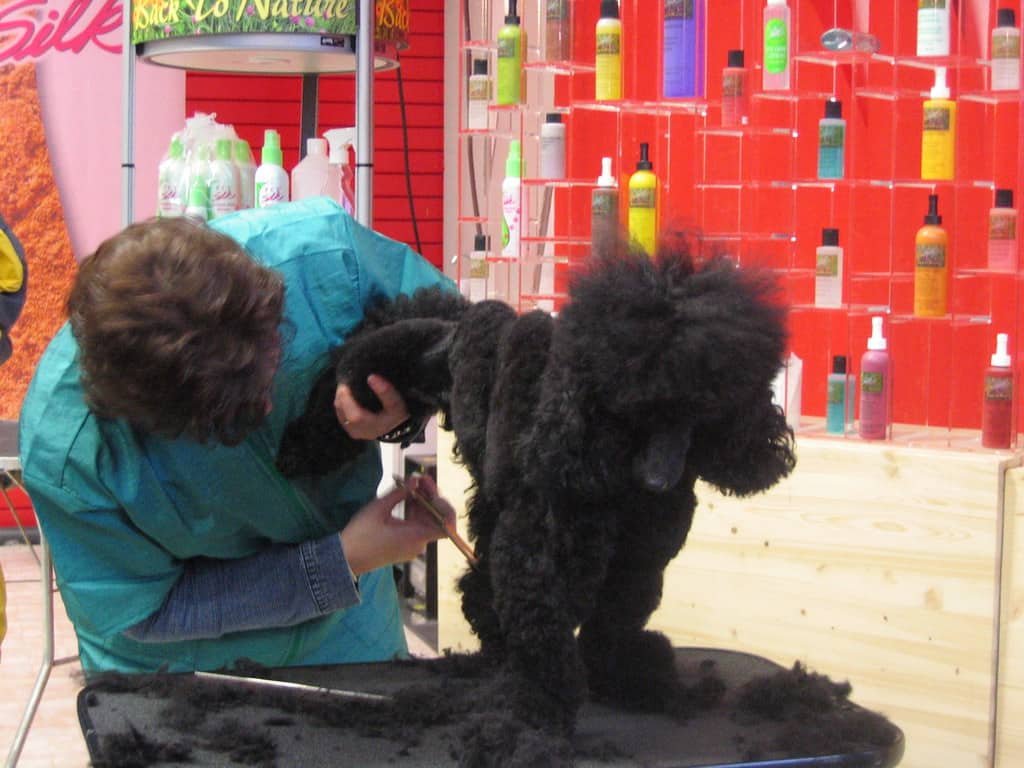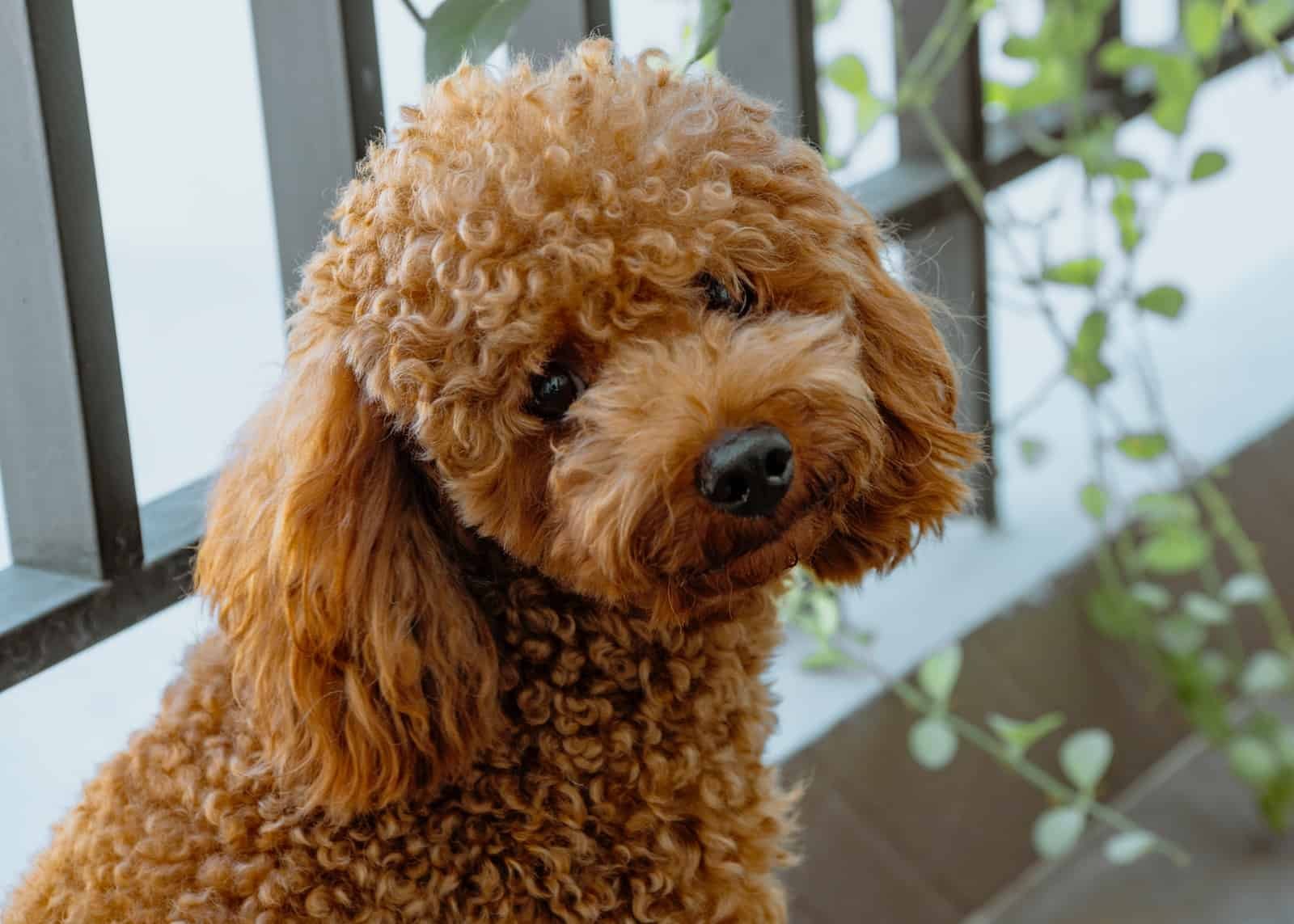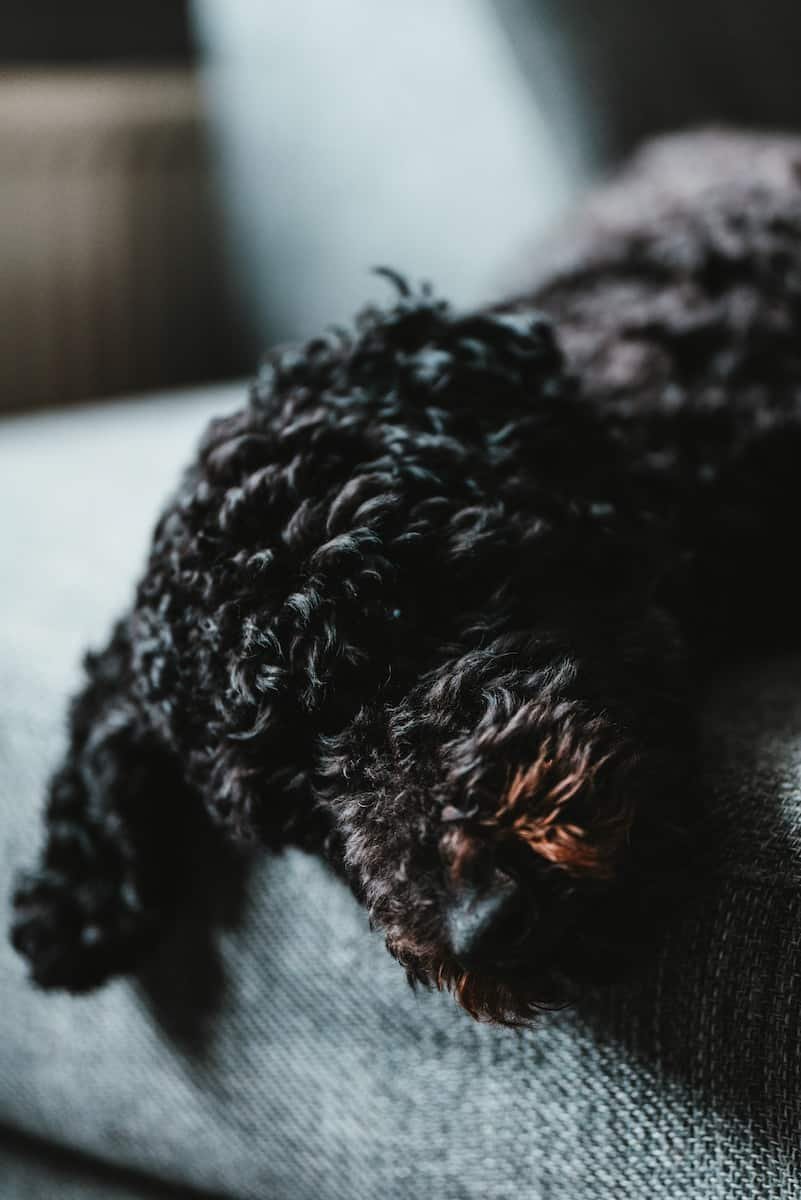
Poodles are known for their unique and stylish fur that comes in a variety of colors and textures. However, each coat type requires different levels of maintenance and care to keep them looking their best. Understanding the different poodle coats and their maintenance needs is essential for any poodle owner.
The three main types of poodle coats are curly, corded, and straight. Curly coats are the most common and require regular grooming to prevent matting and tangling. Corded coats are a unique type of coat that requires a special grooming technique to create the distinctive cords. Straight coats are the rarest type of poodle coat and require minimal grooming compared to the other types.
In this article, we will explore each type of poodle coat in more detail, including their unique characteristics and the best ways to maintain them. Whether you are a new poodle owner or a seasoned poodle enthusiast, this guide will help you keep your pup looking and feeling their best.
About This Guide
- Real Experience: Written by poodle enthusiasts with years of hands-on experience caring for and training poodles.
- Expert Reviewed: Content verified by certified dog trainers and veterinary professionals.
- Fact-Checked: Information sourced from the AKC, veterinary journals, and breed specialists.
- Last Updated: November 2025
Do Poodles Have Fur or Hair?
Poodles have hair, not fur. This distinction is important because the type of coat a dog has can affect its grooming needs and how it affects people with allergies. Poodle hair is thick and coarse compared to the fur of other breeds. It is also known for its unique texture, which is why it requires different grooming techniques than other breeds.
Poodle hair comes in a variety of textures and lengths. Most poodles have wavy or curly hair, but some may be more straight. Some poodles have hair that is very soft and silky, while others may have a coarser texture that is more difficult to maintain.
Regardless of the texture, poodles require frequent brushing and regular grooming to keep them looking their best. Poodle hair comes in a variety of types and textures, each of which requires different levels of maintenance to keep them looking their best.
Curly coats require frequent brushing and grooming to prevent tangles and mats, while the corded variety can be groomed into distinctive cords. Straight hair is the rarest type and requires minimal grooming. Each type has unique maintenance requirements and can vary in texture, density, and length. From the dense and curly hair of the Standard Poodle, to the soft and wavy variety of the Toy Poodle, and even the unique corded style of some poodles, each type requires proper and regular grooming to keep it looking its best. In the following sections, we’ll explore the different poodle coats and how to maintain them for a beautiful and healthy appearance.
- Curly Coats Curly-coated poodles have tight, dense curls that provide a plush and elegant appearance. This type of coat requires regular brushing, at least once or twice a week, to prevent tangles and matting. Use a slicker brush or a comb with rounded tips to gently work through the curls. It’s essential to brush the coat down to the skin to remove dead hair and prevent matting. Curly-coated poodles may also require professional grooming every 4-6 weeks to maintain a tidy appearance and keep their coat in good condition.
- Wavy Coats Wavy-coated poodles have a softer, more flowing appearance than their curly counterparts. While they may not require as much brushing as curly poodles, they still need regular grooming to keep their coat healthy and tangle-free. Brush wavy-coated poodles at least once a week with a slicker brush or comb with rounded tips. Regular grooming, every 6-8 weeks, is recommended for wavy-coated poodles to keep their coat looking its best.
- Corded poodle coats have a unique coat style that resembles dreadlocks. The cords develop as the hair grows and mats together in organized, rope-like strands. This coat type requires special care and grooming to maintain the cords and prevent excessive matting. When bathing a corded poodle, it is crucial to gently squeeze the water from the cords and allow them to air dry to prevent mildew or a musty odor. Regular maintenance of the cords includes separating them to prevent them from becoming too thick or heavy. Corded poodles may need professional grooming to maintain the cords and trim any excess hair.
- Straight Coats – Straight-coated poodles are the rarest type and have a coat that is similar in appearance to other dog breeds. This coat type requires the least amount of grooming and maintenance compared to other poodle coats. Straight-coated poodles should be brushed once a week with a slicker brush or comb with rounded tips to remove dead hair and prevent tangles. Professional grooming is recommended every 8-10 weeks to maintain a healthy coat and appearance.
Poodle Coat Colors and Markings Poodle hair comes in a variety of colors, including black, white, cream, apricot, red, silver, blue, brown, and more. Some poodles have unique markings, such as phantom, parti, or brindle patterns. Regardless of the color or pattern, proper grooming is essential to maintain the coat’s health and appearance.
In conclusion, understanding the type of coat your poodle has and its specific grooming requirements is essential for maintaining a healthy and attractive appearance. Regular brushing and professional grooming are necessary to keep the coat free of tangles and mats, promote healthy skin, and reduce shedding. With proper care and attention, your poodle’s coat can be kept in excellent condition, contributing to your dog’s overall health and well-being.
Different Types of Coats
Poodles are available in three different coat types, each with unique characteristics that set them apart. The most common type is curly. This type has tight curls all over the body, which give Poodles their signature fluffy appearance. The curly coat type requires regular grooming to keep it in good condition, as it is prone to matting. Regular brushing with a pin brush and slicker brush can help keep tangles at bay, and a professional groomer should be enlisted every few months for a trim or full haircut.
Another type of Poodle coat is corded, which is often seen in show dogs. This type is characterized by tangles of hair that form rope-like “cords.” Corded styles require even more maintenance than curly to achieve their unique look. The cords must be carefully prevented from matting and are often formed by separating sections of the hair and twisting them to encourage knotting. This type is definitely not for someone looking for a low-maintenance style, and only experienced groomers should attempt to maintain this look.
The third and least common type of poodle coat is wavy. This type is characterized by long, loose waves rather than tight curls. The wavy hair type is lower maintenance than the curly or corded types. However, it can still require regular grooming to keep it looking its best. Daily brushing with a bristle brush is recommended to keep loose and dead hair from accumulating.
In summary, each type of Poodle coat has its own unique maintenance requirements. Regular grooming is essential to prevent matting and keep the coat soft and healthy. Whether you have a curly, corded, or wavy coat type, keeping up with regular maintenance will help ensure your Poodle looks and feels great.
Coat Types and Maintenance Regularity
Poodles have three types – single, curly, and corded hair styles. Each type requires specific maintenance techniques to ensure it remains healthy and tangle-free. In this article, we will discuss the different types and the regular maintenance required to keep them looking their best.
Single Coats
Single coated Poodles are the most low-maintenance. They have a single layer of hair with no undercoat and do not shed as much as their curly or corded counterparts. Regular brushing with a slicker brush or pin brush and occasional grooming will keep their coat clean and free from loose hair. Toy and Miniature Poodles typically have a single layer, while it is less common in Standard Poodles. It is recommended to brush a single coat, Poodle at least once a week to keep the hair soft and healthy.
While poodles are mostly known for their curly or corded hair styles, some poodles deviate from the norm with single coats. These Poodles usually have a thinner layer of hair and shed less than their curly or corded coat counterparts.
However, don’t let the lower shedding fool you – these poodles are susceptible to matting, tangles, and other conditions. Therefore, it is essential to maintain the desired look through regular grooming.
To keep a single coat looking healthy, use a pin brush and slicker brush to remove any dead hair or loose hair from the coat. These brushes penetrate the thickness of the hair and ensure that no tangles are present. It is recommended to brush a single coat Poodle at least once a week to keep a soft and healthy presence.
Curly Coats
Curly coats comprise a single layer of more loosely curled hair. This type requires more frequent maintenance and should be brushed every two to three days. To prevent tangles, use a wide-tooth comb followed by a pin brush.
Curly poodles are one of the most popular and recognizable hair styles. It comprises a single layer of more loosely curled hair than other coat types, such as the Standard or Toy Poodle. This style requires more frequent care and maintenance than other types, because of its delicate nature. The curls must be kept smooth and free from tangles in order for the hair style to remain healthy.
To keep a Poodle’s hair in optimal condition, it is recommended to brush the hair every two to three days using a wide-tooth comb followed by a pin brush. This will help manage tangles and keep the curls looking their best. Regularly trimming stray hairs around the eyes and ears can prevent matting or tangling of the fur.
Wavy Coats
The wavy coat is a popular, low-maintenance type. It is characterized by its short and slightly wavy hair, usually no longer than two inches. This type should be brushed regularly, with a slicker brush or comb being used to remove tangles and mats. Depending on the climate in which the dog lives, this haircut may require more frequent brushing and grooming.
The wavy haircut is a popular low-maintenance style that has recently gained popularity in the show ring. It is characterized by its short, slightly wavy hair, usually no longer than two inches. This type should be brushed regularly with a slicker brush or comb to remove tangles and mats. Depending on the climate in which the dog lives, this style may require more frequent brushing and grooming.
To keep a wavy poodle in its best condition, it is recommended to brush it at least once a week with a slicker brush or comb. This will help maintain the wavy pattern by removing tangles and mats that can form if left unattended. Weekly trims of the face and feet can help keep the coat looking neat and tidy.It looks great and can easily be trimmed or shaped. In fact, it’s often used as the base for creative cuts or styles.
To keep the wavy coat looking its best, owners should have their poodle professionally groomed every 4-6 weeks. The groomer can trim and use clippers to maintain a neat look. It is important to brush with a pin brush or slicker brush at least once a week. This will help keep the haircut tangle-free and looking its best.
Corded Coats
Corded coats are the rarest type of poodle hairstyle and comprise a single layer of extremely tightly curled hair. This style requires the most maintenance and should be brushed every day. Use a wide-tooth comb followed by a brush or rake to keep this free from tangles.
Cords should be trimmed every 6 to 8 weeks, and it is important to never cut them too short, as this will reduce their length, prevent the coat from curling up, and create an uneven corded look. The cords can be hand-separated or scissored using a thinning shear to maintain uniformity.
To keep cords looking their best, regular conditioning is also recommended. This can be done with a specially planned conditioner or with natural oils such as olive oil or jojoba oil. Conditioning will help keep the cords soft and reduce the risk of matting and tangling.
Keep in mind that regular grooming is a must. Bathing during the coat change period can help with keeping the coat clean and soft and can also help control shedding. After bathing, use a soft bristle brush to keep the coat soft and tangle-free. Keep an eye out for any signs of matting or tangles and address them immediately to avoid any discomfort for your furry friend. Regular grooming will ensure that your single coat Poodle’s coat stays healthy and mat-free.
Characteristics
Poodle Coats are one of the defining features of this breed, and their unique texture and appearance have made them a popular choice among pet owners. There are three different coat types found in Poodles: Curly Coat, Wavy Coat, and Corded Coat.
Curly Coats are the most common type of poodle coat, and they are characterized by tight curls all over the dog’s body. This type of coat gives poodles their signature fluffy and fluffy look. The curls comprise single hairs that are squeezed together to form coils. The downside of curly coats is that they tend to mat easily. Regular brushing is important to keep these coats clean, soft, and relatively tangle-free.
Wavy Coats have a more relaxed texture compared to curly coats. The curls are less defined, and they may vary in length and texture across the dog’s body. Wavy coated Poodles have a tousled look, as if they just woke up from a nap. Wavy Coats do not mat as easily as curly coats, but they still require regular brushing to keep them looking and feeling their best.
Corded Coats are the rarest of the three Poodle Coat types. These coats form long cords that hang down from the dog’s body, giving them a unique and distinctive appearance. The cords can be about the thickness of a pencil and can grow to be several inches long. This type of coat is maintained by separating and twisting the cords as they grow, resulting in a unique and striking appearance.
Poodle puppies are born with a soft and fluffy coat that changes as they grow older. At around 6-12 months of age, puppies will go through a coat change period where their puppy coat falls out and is replaced with an adult coat. It is during this time that they are more prone to matting and tangles. Brushing should be done more frequently during this period to avoid matting and maintain the coat’s natural beauty.
Overall, Poodle Coats are a defining trait of this breed, and each coat type has its unique look and feel. Proper maintenance is crucial to keep them healthy and beautiful, especially during the coat change period. With regular brushing and a little upkeep, Poodles can keep their gorgeous and unique coats for years to come.
Maintenance Requirements
Maintaining a Poodle’s coat requires a certain level of dedication and care to avoid matting and tangles. Depending on the coat type, Poodles need to be brushed regularly to keep their coats soft and shiny. Here are some maintenance guidelines to help owners keep their Poodles looking and feeling their best.
Grooming Frequency: Poodles require regular grooming to keep their coats in good condition. Curly and corded coats require the most maintenance, so daily brushing is recommended to keep matting and tangles at bay. Wavy coats require less frequent brushing, about 2-3 times a week. All Poodles should have their hair trimmed every 4-6 weeks to maintain their coat’s trim and prevent matting.
Bathing Frequency: Poodles should be bathed about once every 3 weeks to keep their coat clean and free of debris. Over-bathing can strip away the natural oils, which can lead to dry skin and other coat conditions. It’s important to use a gentle, pet-safe shampoo that won’t irritate their skin. Avoid getting water inside their ears, which can lead to infections.
Professional Grooming: Taking your Poodle to a professional groomer is recommended every 6-8 weeks for a complete grooming experience. Professional trimmers can get your Poodle’s coat to fit their breed standard, including their distinctive looks. Poodle grooming experts know how to properly maintain a Poodle’s coat, including trimming the hair around their ears, eyes, and anus.
Coat Types and Brush Types: The type of brush needed to maintain a Poodle’s coat depends on their coat type. Curly coats need a pin brush to separate the hairs and prevent matting. A slicker brush is best for wavy coats, while corded coats need minimal brushing with a detangling spray. A bristle brush is a good option for removing loose hair and dirt from all coat types. Avoid using human brushes, as they can damage a Poodle’s coat and make it harder to maintain.
Tools and Supplies Needed: To maintain a Poodle’s coat, you’ll need a few essential tools and supplies. These include a pin brush, slicker brush, bristle brush, scissors, and clippers. You’ll need a pet-safe shampoo, a detangling spray, a comb, and a towel. Having these tools and supplies on hand will make it easier to keep your Poodle’s coat clean and healthy.
Proper maintenance is crucial to keeping a Poodle’s coat at its best. By following these maintenance guidelines, a Poodle’s coat will look and feel its best for years to come.
Professional Groomer
Professional grooming is an essential aspect of poodle care. While it’s possible to do most grooming tasks at home, there are several benefits to taking your poodle to a professional groomer. A professional groomer has the expertise to handle different coat types and can get your poodle looking its best. In this section, we’ll discuss the numerous benefits of professional grooming as well as when it’s the right time to visit a professional groomer.
Benefits of Professional Grooming
Professional grooming is an important part of caring for your poodle. Trimming and maintaining their coat can be challenging, especially for owners who lack experience. This is where a trained professional comes in handy. A professional groomer has the experience, skills and tools to keep your poodle’s coat in prime condition. They know precisely how to manage a poodle’s distinct coat, from the curly hairs to the single coat types.
One of the significant benefits of grooming your poodle under the guidance of a professional is the prevention of tangles and matting. During the coat change period, which occurs when puppies transition from their fluffy puppy coats to their adult coat, there is a high risk of tangling and matting. Professional groomers can help manage and get rid of these tangles, preventing further complications and maintaining the coat’s health.
Regular grooming with a professional can also help prevent several coat conditions that may emerge without proper care. For instance, the buildup of dead hair and loose hair can lead to hot spots, dry skin, and allergies. A professional groomer can help keep these conditions at bay while promoting healthy skin and shiny coats.
Apart from the preventive measures, visiting a professional groomer offers a host of benefits for poodle owners. You can get an even cut that is in line with the breed standard or your preferred style. This is important because trimming a poodle’s fur requires skill and precision to maintain an elegant look. Second, a professional groomer can provide expert advice on how to take care of your poodle’s coat between appointments. Such advice can make your regular brushing and grooming experience more effective and efficient.
There are several benefits to visiting a professional groomer for your poodle’s coat maintenance needs. Their experience, tools and skills can help prevent tangles and matting, and maintain healthy skin and a shiny coat. They can also advise on how to care for your poodle’s coat and achieve an even cut that is in line with the breed standard.
When to Visit Professional Groomer?
While Poodles are a DIY-friendly breed, there are several instances where professional grooming is necessary. One such situation is when your Poodle has an improper coat. An improper coat deviates from the breed standard and could be too curly or too straight. It is best to seek professional help to maintain your Poodle’s coat’s health and beauty in such cases.
Another scenario when professional grooming might be necessary is during the coat change period. During this time, puppies transition from their fluffy puppy coat to their adult coat. Managing this change period can be challenging, and there is a high risk of tangling and matting. Professional groomers can help manage and control these issues, transitioning smoothly for both you and your poodle.
If you are unsure about the right techniques to groom your Poodle, visit a professional groomer. They have extensive experience and knowledge to provide the right haircut and grooming techniques while keeping the breed standard in mind.
Changes in texture, troublesome tangles and matting, or issues such as hot spots, allergies, and dry skin, are additional indicators that point towards the need for professional grooming. A professional groomer knows how to keep your Poodle’s coat healthy and beautiful and can provide you with the right advice on how to maintain it between appointments.
While Poodles are easy to groom, sometimes professional grooming is necessary. Whether your Poodle has an improper coat, is going through the coat change period, or has texture, tangle, and matting issues, a professional groomer can help. They have the skills, tools and experience necessary to maintain your Poodle’s coat’s health and beauty.
Can You DIY Poodle Coat Maintenance?
Although professional grooming is often necessary to keep your pup’s coat looking its best and to ensure proper care, it is possible to DIY some aspects of poodle coat maintenance.
The key to DIY poodle coat maintenance is to understand the different poodles and their coats. Poodles come in a variety of sizes, from Toy Poodles (under 10 pounds) to Standard Poodles (over 45 pounds), and each type has its own distinct coat. The most common coat types for poodles are corded, clipped/clipped-
For maintaining your poodle’s coat, brushing is essential. Depending on the coat type, you will need to brush your poodle a few times per week. For corded coats, use a wide-toothed comb and gently pull the cords apart. For clipped or clipped-shaved coats, use a slicker brush or pin brush for daily brushing and de-tangling.
If your poodle is going through the coat change period, you may need to brush them more frequently. This is especially true for corded coats, as tangles and matting are common during this time. For clipped or shaved coats, use a comb or slicker brush in the same direction of hair growth to remove any knots or tangles.
Besides brushing, regular bathing is essential for both clipped and corded coats. To keep your poodle’s coat clean and healthy, bathe it once a month with a specially planned shampoo for poodles.
Summary
Poodles come in many coat types and sizes, each of which requires specific care and maintenance. Professional groomers provide an invaluable service for maintaining your pup’s coat, but it is possible to DIY some aspects of poodle coat maintenance.
The key to successful DIY poodle coat maintenance is understanding the different poodles and their specific needs. With regular brushing, bathing, and professional grooming, you can keep your pup’s coat healthy and beautiful! With a little of knowledge and dedication, you can keep your poodle’s coat looking its best for years to come!

